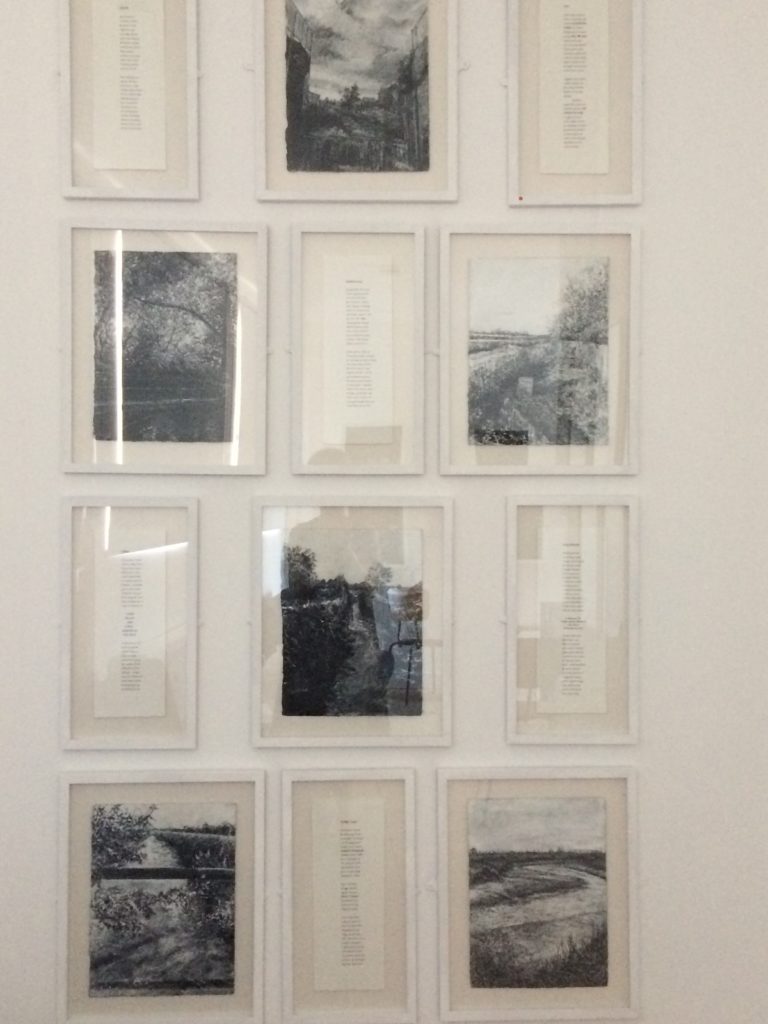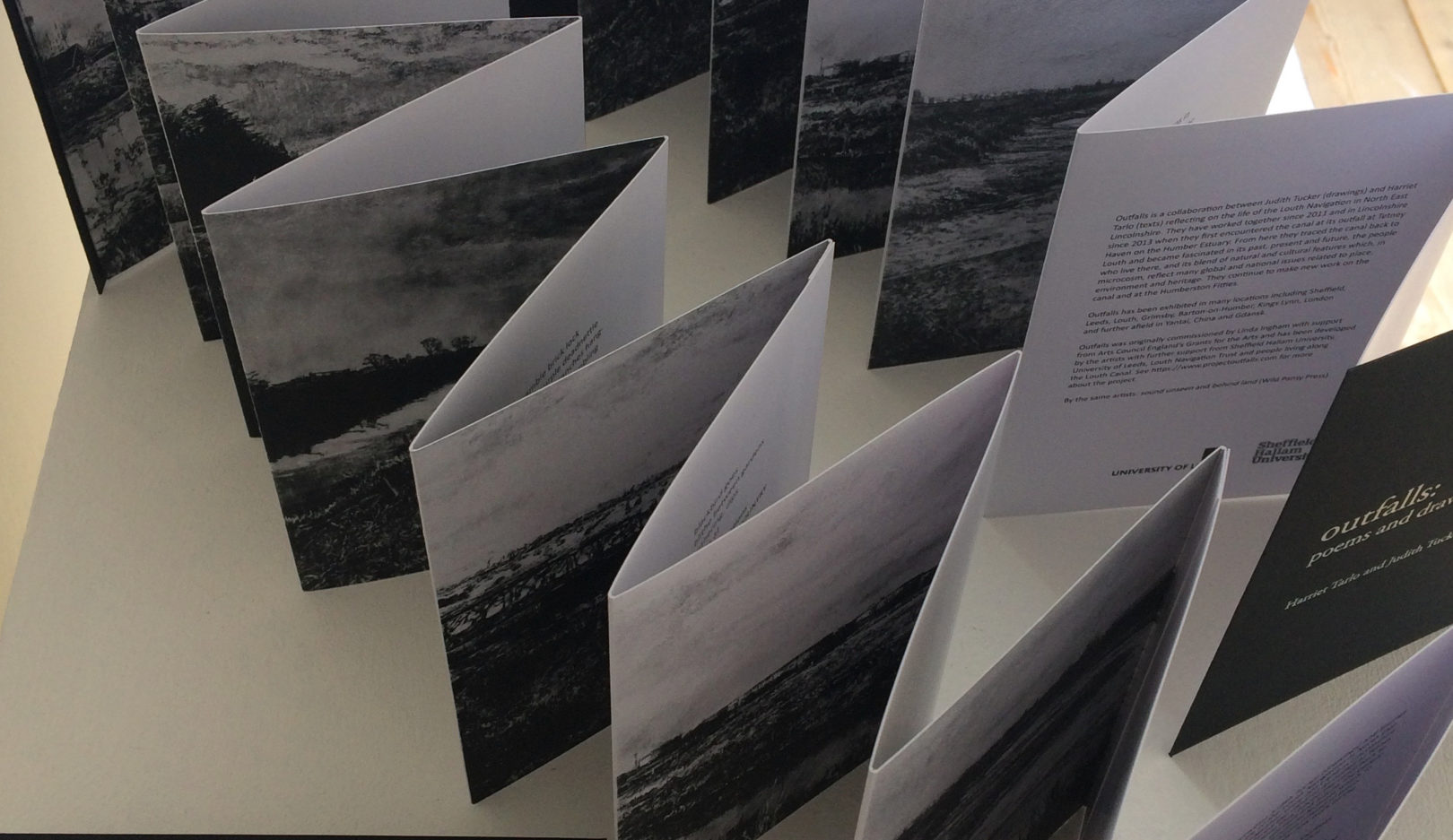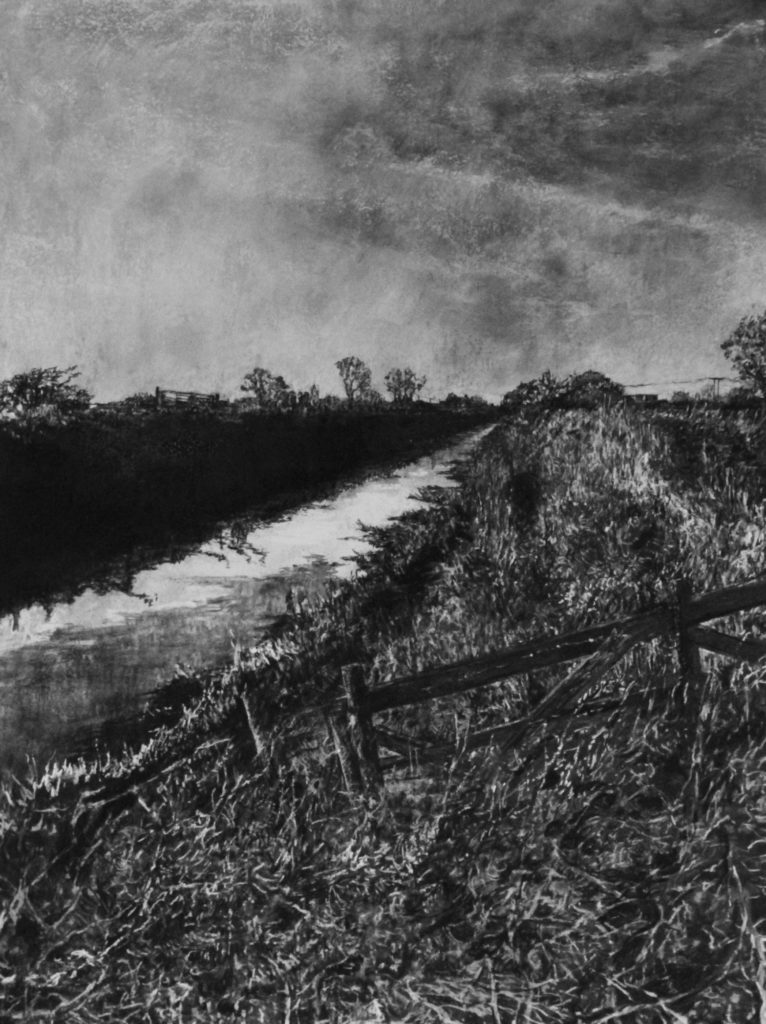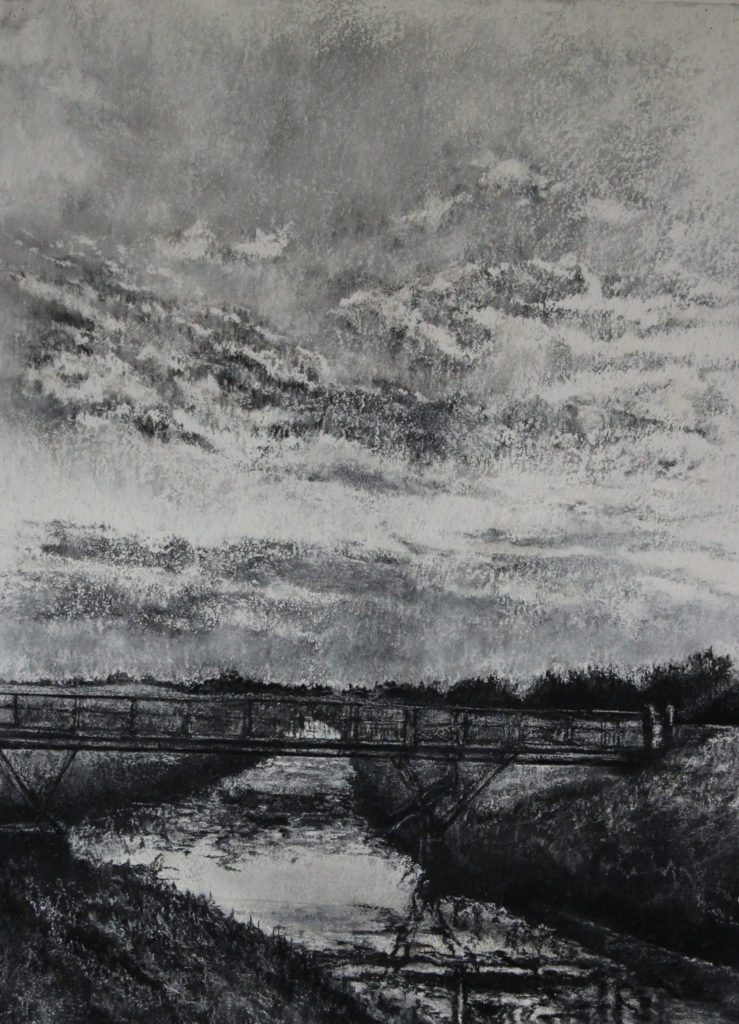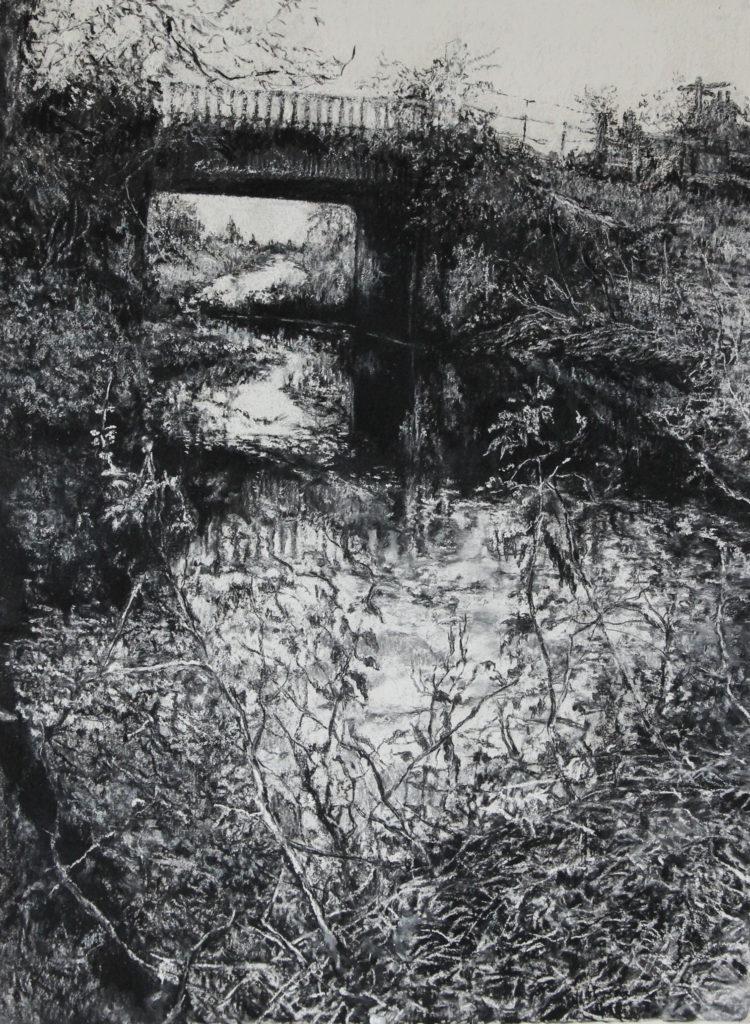Poems and drawings: Harriet Tarlo and Judith Tucker
23 June – 16 September 2018
‘Outfalls’ by Harriet Tarlo, and Judith Tucker, is a joint project of poetry and drawing. Their subject was the Louth Navigation, which is, significantly for them, a disused canal in North East Lincolnshire. Using these different art forms, they explored the surroundings, including the River Ludd nearby. Over the period of its neglect, its working industrial past became absorbed into semi-wilderness. Remnants of its formerly proud architecture crumbled. Nature took over, as niches for local flora and fauna appeared in its culverts, bridges and locks. Such details, revealed by close observation and research, became their subjects.
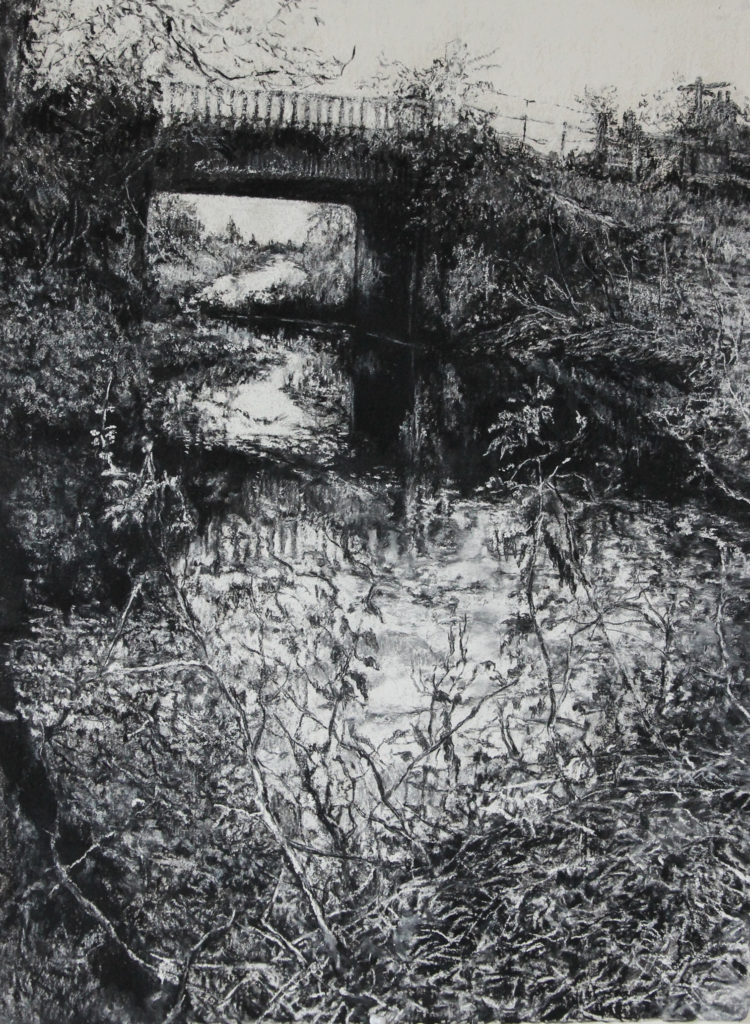
What is natural, what is unnatural ?
Outfalls by Tarlo and Tucker draws on thirty years of experience of working with landscape. The artists explore the practice of drawing in relation to poetry and how it may lead to an affective understanding of place. This work finds expression in their many exhibitions and books. Over the last five years they have developed considerable interest in North East Lincolnshire as a place of beauty. Not only that, but also as one that invites questions about what is natural, and what is unnatural. The Outfalls project, focusing on the Louth Canal, was first sparked by encountering its outfall at Tetney Haven on the Humber Estuary.
cracked coping stone held
Harriet Tarlo poem fragment
heavy up by
brick & wire
empty where
gates hung but
still canalised
streams ever
over growing
edge aslant
The Louth Canal
The Louth Canal or Navigation, constructed 1765-70, runs for just over eleven miles between Louth and Tetney Haven. But then, towards the end of the Nineteenth Century, its decline coincided with the development of roads and railways. This was the case with so many rural canals, leading to similar decay everywhere. The devastating flood at Louth in 1920 was the final straw. It was an event for which the town became well-known. In 1924 the canal closed and began to fall into slow dereliction. Now, there is a Louth Navigation Trust dedicated to its preservation, with a thriving community of volunteers involved.
Raising awareness of our industrial heritage
Tarlo and Tucker explore the visual and textual potential of this place, and its past and its present. They even consider its possible futures. In doing so, they record the many inter-changes of water, the crossings of energy lines, seasonal changes in plant life. Historical remnants of industry and the ghosts of lost buildings, leave traces of once thriving communities. New life is settling in, evident through the presence of birds and animals. However, these are often only in tiny traces, as they create fragile homes among the old culverts, bridges and locks.
Close observation
The artists walked, drew and wrote along the canal, and subsequently researched. Judith Tucker drew in charcoal and pigment, both large features and tiny details of the landscapes and remains. She noted plants, hedges, water, reflections. Neither an old anchor mooring, a broken lock, nor an unprotected weir escaped her notice. Harriet Tarlo, on the other hand, conducted interviews with locals. She observed landscapes, plants, creatures, sounds and sights, and wrote narratives. Creeping into these are snatches of found texts, canal vocabulary, old notice boards, names and signposts. And threading through the entire project like gleams of perception, are her poems.
Judith Tucker and Harriet Tarlo did not intend any of these activities to be either nostalgic nor didactic, but rather to reflect what they found there. Their work raises questions, about how we see these relics of our industrial heritage and surrounding landscape. Above all, they raise awareness of the problems we face, about what will happen to such neglected places? Such questions are relevant and need to be repeated all around the country,
cut banks out
Harriet Tarlo poem fragment
water capture
course land
capture course
water Lud let
in let out low
line landcut
line strip sky
Extracts from our impact case study:
Outfalls: Tarlo & Tucker
The exhibition had a natural target audience among writers / poets and artists . It was inspiring for other artists and writers who had previously been unfamiliar with the work. A number of artists said it gave them the courage to contemplate trying to combine visual art and writing.
The exhibitions brought together aspects of cultural and natural heritage from Lincolnshire and the Fens, and North Norfolk. Through their focusing especially on waterways and fields, fens and coastal landscapes – a greater number of people became aware of the issues. Viewers spotted the tensions between industry and natural preservation; the issues about dereliction, decay and whether or not to restore and repair.
The works of art and poetry caused people to consider different options for interpretation of the landscape. They saw that art could enable reflection on a number of different attitudes. They often spent considerable time in reflection and reminiscence.
There were different options and ways for people to engage
People who knew the areas but for one reason or another could not return, especially appreciated the levels of writing. Creative writing, narratives & interviews gave access to landscapes in different ways. Consequently, there were different options and ways for people to engage with what they saw and read.
The gallery has a developing relationship with B-tech students at the College of West Anglia. This brings a regular turnover of work-experience students from there. One group of students came specifically to look at how to combine visual art and writing. The students learned from the exhibition, specifically how to be articulate about it and discuss its underlying issues. It was a great subject for discussion, as so many people had some familiarity with the terrain.
We also held an Art, Writing and Ecology study day at Thoresby College, the King’s Lynn Preservation Trust.
